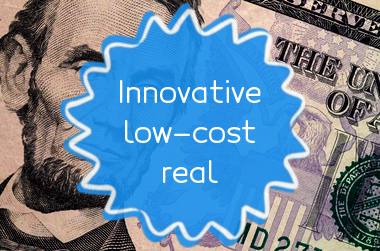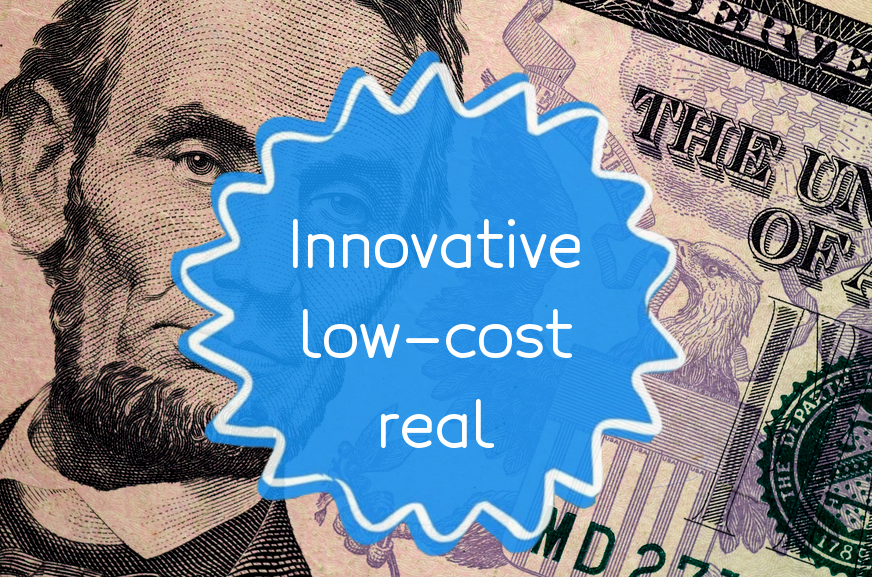- 1. House Hacking: This involves buying a multi-unit property, living in one of the units, and renting out the others to pay your mortgage. This method allows you to earn income and build equity in your property while living for free or cheap.
- 2. Crowdfunding: Consider joining a real estate crowdfunding platform that allows you to pool money with other investors to purchase larger properties. This method can provide a low barrier-to-entry way to invest in high-quality projects with lower risk.
- 3. Wholesaling: This is where you find discounted properties and sell them to other real estate investors. You earn a commission from the sale without having to pay for the property.
- 4. Lease Option: This involves finding a motivated seller who is willing to lease their property to you with an option to buy it outright in the future. You can then rent out the property and earn income while building equity towards purchasing the property.
- 5. Micro-flipping: This is a strategy where you find distressed or undervalued properties that need minor fixes, make renovations or improvements, and sell them for a profit. This method can be facilitated with a small amount of cash and creative financing.
- 6. REIT Investing: Consider investing in a Real Estate Investment Trust (REIT), which allows you to invest in real estate properties without owning them outright. REITs are beneficial for those who want exposure to the real estate market without negotiating properties or making expensive investments.
Note: Always consult with a financial advisor before investing in any investment opportunity.
Live-in Flips
Live-in flips is a real estate investment strategy that involves purchasing a property, fixing it up or renovating it while living in it, and then selling it for a profit after a certain period of time. The key advantage of this strategy is that it allows investors to save on housing costs while using their living expenses to increase the value of the property. By living in the property, investors can also oversee the renovations and ensure that they are done to their standards. This strategy may involve delaying the sale of the property for a year or two to take advantage of tax benefits related to capital gains. Live-in flips may require a significant capital investment, and investors should carefully consider the cost of renovations and the potential return on investment before undertaking this strategy. Additionally, investors may need to be prepared for the challenges that come with living in a construction zone while renovations are taking place.
House Hacking
House Hacking is a real estate investing strategy that involves buying a property, living in one unit or portion of the property, and renting out the other units or portions of the property to generate rental income. It is a way to reduce or entirely eliminate monthly housing payments while building long-term wealth through rental income.
For instance, a person may invest in a 4-unit apartment complex and occupy one unit while renting out the other units. By doing so, the tenant's rent would cover the mortgage, taxes, and other expenses, and the investor would be able to accumulate wealth. While House Hacking in this example would require the occupant to manage tenants, property maintenance and repairs, and deal with any other tasks related to operating a rental property, it could be a worthwhile investment as rental properties tend to appreciate over time, require only minimal costs for upkeep, and provide a stable source of passive income.
Real Estate Wholesaling
Real estate wholesaling is a process where a real estate investor finds and contracts a property, usually with a motivated seller in a distressed or high equity situation, and then assigns the contract to another investor for a fee. The wholesalers role is to secure a property under contract at a low price and then quickly sell the contract to a buyer or investor who will close on the purchase. The wholesaler usually makes a profit by selling the contract at a higher price than what they paid for it, but without ever taking possession of the property.
This means that the wholesaler does not have to deal with financing, repairs, or renovations; instead, they focus on finding properties with potential under-market value deals and assigning to the end buyer for a fee. This process can be done in as little as a few days or a few weeks, depending on how quickly the wholesaler can find a buyer and close the transaction. Real estate wholesaling is popular among beginner investors or those who want to create a steady flow of income without having to invest their own capital or take ownership of the property.
Borrow the Down Payment: Business Credit
Borrowing the down payment with business credit involves using a business line of credit or business loan to borrow the funds needed for a down payment on a property. This is typically done by a business owner who intends to purchase a property for their business but does not have enough cash on hand for the down payment.
By using business credit, the borrower can access a significant amount of money at once, which can be used for the down payment on a property. This type of borrowing can be advantageous because it allows the borrower to retain their cash reserves for other business expenses.
However, it is important to note that borrowing the down payment with business credit can come with its own risks. The borrower will need to assess their ability to repay the loan or line of credit, especially if their business has not yet generated enough income to support it. Additionally, interest rates and fees associated with the loan or line of credit can add additional costs to the borrowing process.
Borrow the Down Payment: Seller Financing
Borrowing the down payment with seller financing refers to a scenario where a homebuyer borrows the money for the down payment from the seller of the property. This works by the seller agreeing to finance part of the purchase price of the property, essentially acting as a lender to the buyer. The buyer would then use the funds provided by the seller to cover the down payment on the purchase.
The way this works is that the seller offers to carry a note (lend money) to the buyer for the down payment, typically at a higher interest rate than the primary mortgage, for a specific period of time. This loan can be structured to provide the seller with periodic payments while also helping the buyer acquire the necessary funds to cover the down payment.
One of the benefits of this approach is that it can make it easier for the homebuyer to purchase a property if they don't have the necessary funds to cover a large down payment. However, it also comes with risks, such as the possibility of defaulting on the loan and the potential for disagreements between the buyer and seller on loan terms.
In summary, borrowing the down payment with seller financing can provide an option for homebuyers who don't have the funds for a large down payment, but it's important to carefully consider the risks and any potential consequences before agreeing to this type of arrangement.
Just one more thing: if you liked the article, please like us on social media and share this article with friends.



